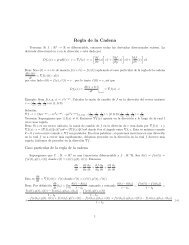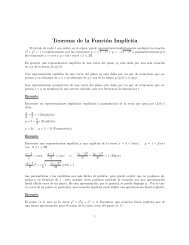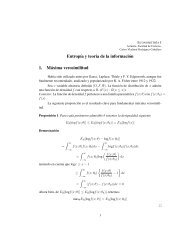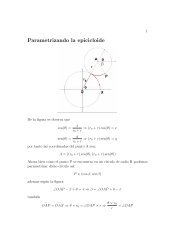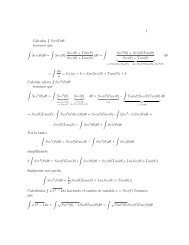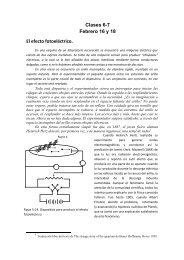"Surely You're Joking, Mr. Feynman!" - unam.
"Surely You're Joking, Mr. Feynman!" - unam.
"Surely You're Joking, Mr. Feynman!" - unam.
Create successful ePaper yourself
Turn your PDF publications into a flip-book with our unique Google optimized e-Paper software.
The South African artist came over to my house one time to look at my drawings.<br />
He said he thought it would be fun to have a oneman show. This time I was cheating: If I<br />
hadn't been a professor at Caltech, they would have never thought my pictures were<br />
worth it.<br />
"Some of my better drawings have been sold, and I feel uncomfortable calling the<br />
people," I said.<br />
"You don't have to worry, <strong>Mr</strong>. <strong>Feynman</strong>," he reassured me. "You won't have to<br />
call them up. We will make all the arrangements and operate the exhibit officially and<br />
correctly."<br />
I gave him a list of people who had bought my drawings, and they soon received a<br />
telephone call from him: "We understand that you have an Ofey."<br />
"Oh, yes!"<br />
"We are planning to have an exhibition of Ofeys, and we're wondering if you<br />
would consider lending it to us." Of course they were delighted.<br />
The exhibition was held in the basement of the Athenaeum, the Caltech faculty<br />
club. Everything was like the real thing: All the pictures had titles, and those that had<br />
been taken on consignment from their owners had due recognition: "Lent by <strong>Mr</strong>.<br />
Gianonni," for instance.<br />
One drawing was a portrait of the beautiful blonde model from the art class,<br />
which I had originally intended to be a study of shading: I put a light at the level of her<br />
legs a bit to the side and pointed it upwards. As she sat, I tried to draw the shadows as<br />
they were her nose cast its shadow rather unnaturally across her face so they<br />
wouldn't look so bad. I drew her torso as well, so you could also see her breasts and the<br />
shadows they made. I stuck it in with the other drawings in the exhibit and called it<br />
"Madame Curie Observing the Radiations from Radium." The message I intended to<br />
convey was, nobody thinks of Madame Curie as a woman, as feminine, with beautiful<br />
hair, bare breasts, and all that. They only think of the radium part.<br />
A prominent industrial designer named Henry Dreyfuss invited various people to<br />
a reception at his home after the exhibition the woman who had contributed money to<br />
support the arts, the president of Caltech and his wife, and so on.<br />
One of these artlovers came over and started up a conversation with me: "Tell<br />
me, Professor <strong>Feynman</strong>, do you draw from photographs or from models?"<br />
"I always draw directly from a posed model."<br />
"Well, how did you get Madame Curie to pose for you?"<br />
Around that time the Los Angeles County Museum of Art had a similar idea to<br />
the one I had, that artists are far away from an understanding of science. My idea was that<br />
artists don't understand the underlying generality and beauty of nature and her laws (and<br />
therefore cannot portray this in their art). The museum's idea was that artists should know<br />
more about technology: they should become more familiar with machines and other<br />
applications of science.<br />
The art museum organized a scheme in which they would get some of the really<br />
good artists of the day to go to various companies which volunteered some time and<br />
money to the project. The artists would visit these companies and snoop around until they<br />
saw something interesting that they could use in their work. The museum thought it<br />
might help if someone who knew something about technology could be a sort of liaison




